Fish are a diverse group of aquatic animals that come in a wide range of sizes, shapes, and colors. From the tiny guppy to the giant whale shark, there is no shortage of fascinating fish species in the world.
Fish play an important role in many ecosystems, serving as predators and prey. They are also an important food source for humans, with many different types of fish being consumed around the world. Fish genetics analysis is essential for researchers, farmers, and conservationists.
It can help reveal the genetic diversity of fish populations and provide insights into their biology, ecology, and evolution. We will guide you through all the tools and processes required to analyze fish genetics. We will also discuss the challenges that come along with how to analyze fish genetics.
Additionally, we will delve into the medical applications of fish genetics analysis. Such as species identification using FISH and comparative genomic hybridization in fish. Read on to discover the benefits of using genetic analysis to study fish and unlock a new world of understanding these aquatic creatures.

6 Practical Processes On How To Analyze Fish Genetics

The process of analyzing fish genetics involves several critical steps. To start with, one needs to extract the DNA from a fish sample and then amplify specific DNA sequences of interest using Polymerase Chain Reaction (PCR).
Subsequently, the amplified DNA fragments can be separated by size using gel electrophoresis for further analysis. Once this step is complete, sequencing can be done to determine the genetic makeup of the isolated fragments. Finally, data obtained from sequencing is analyzed using various bio-informatics tools to draw meaningful conclusions about fish genetics.
The use of PCR in amplifying specific DNA sequences and gel electrophoresis in separating amplified fragments are pivotal techniques in analyzing fish genetics. Sequencing allows the determination of genetic information, while bioinformatics tools aid in data analysis and drawing sound conclusions. Here are 6 process on how to analyze fish genetics
1. Tools For Dna Analysis Of Fish
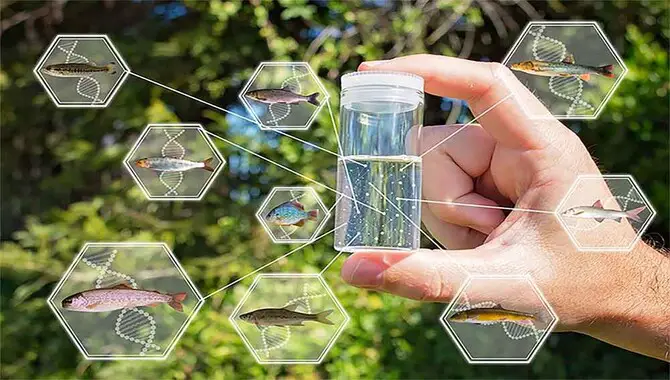
Analyzing fish genetics can reveal valuable information about the species, such as their genetic diversity and population structure. Several tools and equipment are required to perform DNA analysis of fish. One of the most important tools is a DNA extraction kit, which isolates high-quality DNA from fish tissues.
PCR (polymerase chain reaction) machines are also necessary, as they amplify specific regions of DNA for further analysis. Gel electrophoresis equipment separates DNA fragments based on size and visualizes them.
Additionally, sequencing instruments are used to determine the order of nucleotides in the DNA sequence. These tools and equipment are essential for performing accurate and reliable DNA analysis of fish genetics, ultimately aiding conservation efforts and fisheries management.
2. Sample Collection And Preparation For Genetic Analysis
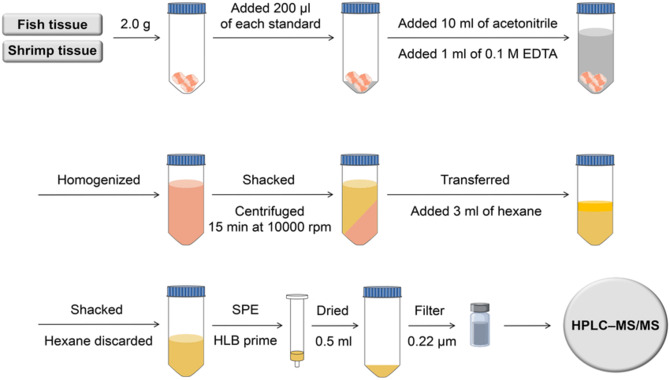
When preparing to analyze fish genetics, Sample Collection and Preparation is an essential step that requires special attention. Proper labelling and documentation of samples are crucial to avoid any mix-ups during analysis. Obtaining fish samples from various sources like fin clips, scales, and blood or tissue samples plays a significant role in ensuring the accuracy and quality of the results.
Furthermore, storing these samples appropriately is vital for obtaining the quality DNA required for analysis. Keeping these samples in a cool and dry place before delivering them to the lab ensures they are in perfect condition when they reach there.
3. Dna Extraction And Quantification
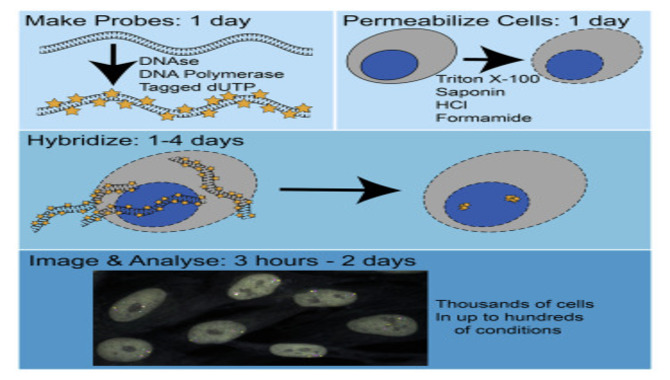
When analyzing fish genetics, it is essential to extract and quantify DNA accurately. Isolating DNA from a fish tissue sample is a crucial step that involves determining the concentration and amount of DNA present. It is necessary to ensure that the extracted DNA is pure and free from contaminants, preventing interference in downstream analyses.
Different methods, such as commercial kits or traditional techniques like phenol-chloroform extraction, can be used for DNA extraction. Following this, researchers can quantify the concentration of extracted DNA through various means, such as spectrophotometry or fluorometry.
The successful analysis of fish genetics also requires knowledge of fluorescence. In situ hybridization (FISH), probes, amplification, sequencing, gel electrophoresis, and data analysis tools such as bioinformatics techniques.
Additional techniques include species identification using FISH and comparative genomic hybridization in fish. Virtual karyotyping techniques for fish and detecting chromosomal abnormalities through fluorescence microscopy or scoring with metaphase cells have also proved valuable.
4. Molecular Markers For Fish Genetic Analysis
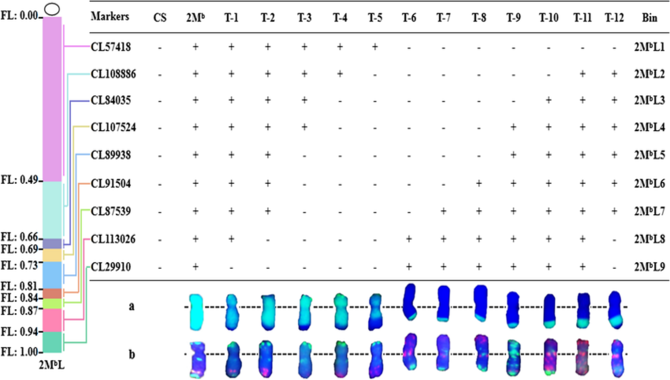
The identification of genetic variations in fish is achievable through molecular markers or short sequences of DNA. Various types of molecular markers are available such as microsatellites or SNPs, that accurately identify different fish species and populations.
This method allows us to understand the genetic diversity and evolution history of fish populations more efficiently. To analyze molecular markers, several techniques like PCR or gel electrophoresis are available at our disposal. However, it’s crucial to ensure that the extracted DNA is pure without contaminants for downstream analyses and does not suffer from interference.
5. Data Analysis And Interpretation Of Fish Genetic Information
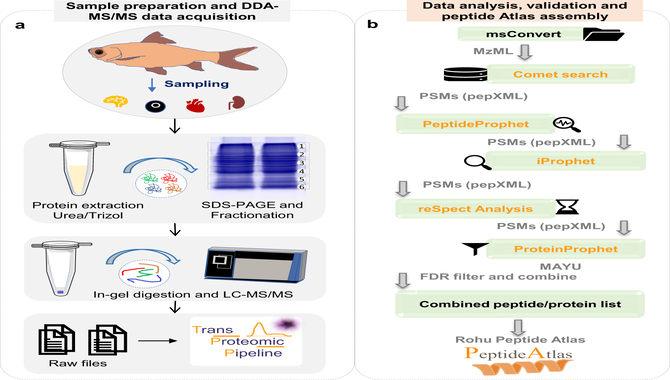
Understanding fish genetics is imperative in aiding conservation efforts and sustainable fisheries management. Software tools and statistical models can reveal insights into population structure, genetic diversity, and gene flow among populations by analyzing genetic data obtained from fish samples.
Interpreting the results of such analyses requires knowledge of genetics and how it applies to fisheries management. Fisheries managers must use this information to develop strategies for maintaining healthy fish populations while ensuring sustainability for future generations.
6. Applications Of Fish Genetics Analysis
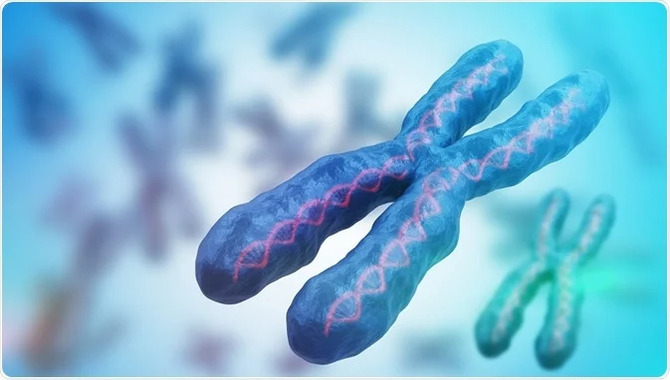
Fish genetics analysis has numerous applications that aid in identifying different types of fish species and their populations. It helps develop breeding programs for aquaculture purposes while aiding conservation efforts by revealing insights into evolutionary history. We employ molecular markers such as microsatellites and SNPs to increase accuracy when identifying variations.
In DNA sequences between different types of fish species or populations. Analyzing data requires using various software tools alongside statistical models to gain insight into population structures, genetic diversities, and gene flows among populations.
Fluorescence in situ hybridization (FISH) and comparative genomic hybridization (CGH) with fluorescent probes. Or dyes can detect chromosomal abnormalities, including translocations and duplications involving specific DNA sequences or entire chromosomes within solid tumors or normal cells.
Challenges In Fish Genetics Analysis And Future Directions

As analytical techniques evolve in the field of fish genetics analysis, it creates newer challenges. To analyze fish genetics effectively, obtaining high-quality DNA samples from fish is still a major hurdle researchers must overcome.
Analysts face the additional challenge of dealing with large complex datasets generated by modern analytical techniques. These challenges drive researchers to further enhance their understanding of fish genetics and improve their interpretation capabilities regarding genetic data obtained from various fish species.
In the future, scientists aim to explore new areas like epigenetics that help regulate gene expression. While developing new tools for manipulating fish genomes.
Utilizing Probes For Fish Genetic Analysis
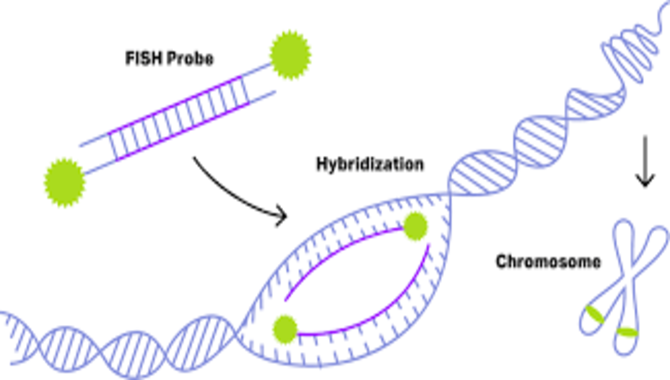
Fish genetics analysis can be conducted through the use of specific probes that help in the detection of distinct genetic markers present in its DNA. The process involves carefully selecting a suitable probe from the available options, including fluorescent probes and RFLP probes.
Hybridization occurs when the unique sequence of a chosen probe binds to complementary target DNA sequences present in a fish’s genome. This approach is valuable for various purposes, such as species identification and studying population genetics.
And even chromosomal abnormalities detection using techniques like FISH or Spectral Karyotyping. Furthermore, it is an efficient way to develop breeding programs for aquaculture and conservation efforts. While understanding evolutionary history at a molecular level.
a) Preparing And Hybridizing RNA Probes
To perform fish genetic analysis, it is essential to prepare RNA probes carefully. The process involves isolating RNA from the sample and synthesizing cDNA labeled with a fluorescent marker. Under fluorescent microscopy, the target DNA sequences in the fish sample are hybridized with the labelled cDNA.
This enables researchers to detect chromosomal abnormalities, translocations, duplications, and other cytogenetic abnormalities. Associated with genetic diseases such as acute lymphoblastic leukaemia, Prader-Willi syndrome, breast cancer, and solid tumors.
Various techniques like in situ hybridization (ISH), fluorescence in situ hybridization (FISH), and comparative genomics. We can use hybridization (CGH) and spectral karyotyping (SKY) to detect specific DNA sequences or single nucleotide polymorphisms (SNPs). It is important to note the proper scoring and interpretation of FISH results. They are essential for accurate diagnosis, prognosis, and gene mapping.
b) Preparing And Hybridizing DNA Probes
Preparing and hybridizing DNA probes is a key technique in fish genetics analysis. This technique involves isolating the target gene, labelling the probe with a fluorescent marker, and incubating it with the fish DNA sample. Hybridization occurs when the probe binds to its complementary sequence in the fish DNA. This process can help identify genetic mutations or variations in fish populations for research or conservation purposes.
Proper lab techniques and equipment are necessary for successful DNA probe preparation and hybridization. Preparing and hybridizing DNA probes involves several steps, including isolation of the sample, labeling of the probe, insertion of the labeled probe into the specimen, preparation of interphase nuclei, detection of fluorescent signals, and scoring of results.
The use of fluorescence microscopy has greatly enhanced the visualization and detection of chromosomal aberrations. Fluorescent probes can detect specific DNA sequences in situ hybridization (FISH), which is useful for gene mapping and detecting translocations or amplifications in solid tumours. Comparative genomic hybridization (CGH) using fish probes allows for detection.
Medical Applications Of Fish Genetics Analysis

The field of fish genetics analysis encompasses a wide range of medical applications. By studying the genetic basis of diseases affecting both fish and humans alike, researchers can lead to the development of new treatments for human diseases.
A better understanding the fish genome can improve aquaculture breeding techniques, leading to more efficient and sustainable production methods. Not only that but fish genetics analysis also assists in identifying and managing aquatic resources, such as conservation efforts.
a) Species Identification Using Fish
Fish, or Fluorescence In Situ Hybridization, is a powerful cytogenetic technique that enables us to analyze and identify specific DNA sequences in fish genomes. The technique involves hybridizing fluorescent probes with complementary DNA sequences in situ, allowing.
For visualization and identification of the target sequences under a fluorescence microscope. By utilizing fish analysis, we can identify chromosomal abnormalities such as translocations, duplications, deletions, and other cytogenetic abnormalities associated with genetic diseases. Additionally, fish can assist in detecting the amplification. Or deletion of certain genes associated with solid tumors such as breast cancer or chronic myelogenous leukemia (CML).
Furthermore, fish analysis has shown great promise in detecting minimal residual disease (MRD). Among patients with acute lymphoblastic leukaemia (ALL) or acute myeloid leukaemia (AML). Notably, during the Human Genome Project, fish testing has been used widely for gene mapping and identifying single nucleotide polymorphisms (SNPs) within human chromosomes.
b) Comparative Genomic Hybridization In Fish
Comparative Genomic Hybridization (CGH) is a powerful cytogenetic technique for analyzing fish chromosomal abnormalities and genetic variations. By comparing the DNA of two distinct populations of fish with different genetic makeup using fluorescent probes and a fluorescence microscope. CGH helps pinpoint specific DNA sequences responsible for certain traits or diseases in fish. This information can be used to develop more effective breeding techniques for aquaculture and improve sustainable production.
Moreover, CGH can assist researchers in understanding the genomic changes associated with different traits, such as disease resistance or growth rate. Overall, CGH has many applications in fish genetics research. Including identifying genes responsible for certain traits or diseases and studying genomic changes associated with different characteristics.
c) Virtual Karyotype Techniques For Fish
Virtual karyotyping is a non-invasive cytogenetic technique that enables researchers to study the chromosomes of fish using computer software. Visual karyotyping can identify chromosomal aberrations and genetic disorders in fish populations by analyzing specific DNA sequences in interphase nuclei with a fluorescent microscope.
This technique has been applied in detecting numerous diseases such as breast cancer, Prader-Willi syndrome, acute lymphoblastic leukaemia (ALL), acute myeloid leukemia (AML), chronic myelogenous leukaemia (CML), Angelman syndrome, myeloma, Velocardiofacial syndrome (VCFS), and Philadelphia chromosome-positive leukaemias.
Virtual karyotyping can also be used for gene mapping and detection of single nucleotide polymorphisms (SNPs) through spectral karyotyping (SKY) or multiplex-fish (M-fish). Overall, virtual karyotyping has significant medical applications in aquaculture and fisheries management by aiding in developing effective breeding strategies and conservation biology.
What Are The Benefits Of Using Genetic Analysis On Fish?
Genetic analysis in studying fish populations has numerous benefits that can inform conservation efforts and improve fisheries management practices. Using genetic analysis to study fish populations can provide valuable information for conservation efforts and fisheries management.
By analyzing the DNA of fish populations, researchers can determine the genetic diversity and structure of different populations, which can help to identify vulnerable or endangered species.
You can also use this information to track the movement of fish between different habitats or regions. Which can aid in developing effective conservation strategies. Additionally, genetic analysis can provide insight into the health and vitality of fish populations, as well as their susceptibility to disease or environmental stressors.
Conclusion
Fish genetics is a fascinating field of study exploring different fish species’ genetic makeup. Scientists can better understand fish’s origins, breeding patterns, and evolutionary history by examining fish’s DNA. This knowledge can then be used to develop new methods for fish farming, conservation efforts, and even medical research.
Unlocking the mysteries of fish genetics can be daunting, but with the right tools and processes, it can yield valuable information for various industries. From understanding population dynamics to aiding conservation efforts, fish genetics analysis is a powerful tool.
We’ve discussed how to analyze fish genetics. However, it’s not without its challenges; future research will continue refining the techniques used. With the right tools and expertise, anyone can contribute to the growing body of knowledge on fish genetics.
Frequently Asked Questions
How To Read Fish Cytogenetics Report?
A FISH cytogenetics report provides details on chromosome abnormalities or mutations found in a sample using specific probes. Reading the report carefully and consulting with a genetic counselor or healthcare provider can aid in diagnosis and treatment planning for genetic disorders. It is essential to seek professional guidance to understand the results fully.
Can Fish Analysis Be Used To Detect A SNP?
FISH analysis is a useful technique for detecting SNPs by using fluorescent probes that attach to specific DNA sequences. With various probes, it can identify particular SNPs in DNA and is helpful in studying genetic variations’ effects on health and disease.
Why Do We Need To Genetically Identify Fish Products?
Genetically identifying fish products is essential to prevent seafood fraud, where cheaper or less desirable fish are labeled more expensive or popular. This fraudulent practice cheats on consumers and harms the fishing industry’s sustainability by promoting overfishing of certain species and damaging the reputation of trustworthy fishers and suppliers. Genetic identification can ensure accurate labeling and help maintain the integrity of the seafood market.
What Can I Use As A Reference Genome For My Fish?
Selecting the ideal reference genome for fish genetics research varies by species. Zebrafish, medaka, and salmon are common references. A high-quality genome with well-annotated functional gene data is crucial. Consulting experts in the field can aid in choosing the best option for your study.
Which Type Of DNA Test Should I Use For My Particular Situation?
The type of DNA test you should use for your particular situation depends on what you want to analyze. Some common types of DNA tests include SNP genotyping, whole-genome sequencing, and targeted gene sequencing. Consulting with a genetic counselor or healthcare provider can help determine the appropriate test for your needs.

Aquarium passion is all about connecting with the aquatic life and providing education to the public on the importance of these creatures. We showcase a wide variety of marine life through our exhibits as well as working with schools to provide unique learning opportunities for students of all ages.








